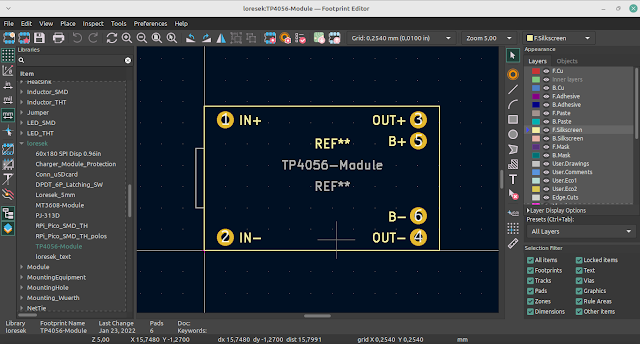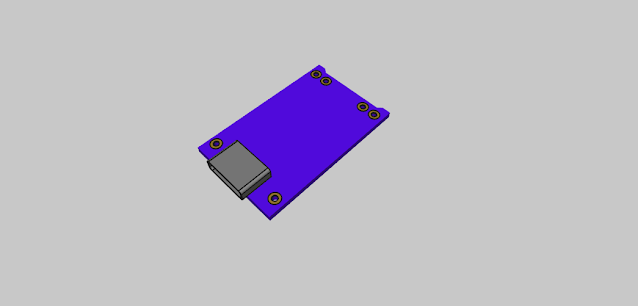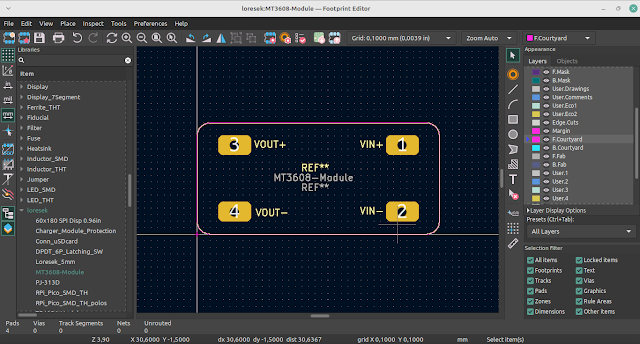KiCAD Project: Riegel Computer
What is the Riegel Computer KiCAD Project?
The Riegel Computer KiCAD Project, hosted on GitHub, is an open-source hardware project designed by Machdyne. This project involves creating a simple, yet powerful, computer using KiCAD, a popular software for designing electronic circuits.Why Should You Care?
Ease of Use
The Riegel Computer KiCAD Project is designed with beginners in mind. The detailed documentation and clear instructions make it accessible even for those with little to no experience in electronic design. The step-by-step guides are particularly helpful, breaking down complex tasks into manageable steps.
Educational Value
This project is an excellent learning tool. It covers a wide range of topics, from schematic design and PCB layout to soldering and troubleshooting. By working through the project, you gain practical experience and a deeper understanding of how electronic circuits and computers work.
Community Support
One of the strengths of this project is its active community. There are forums and discussion boards where you can ask questions, share your progress, and get feedback from other enthusiasts. This support network is invaluable, especially when you encounter challenges or need advice.
Quality of Documentation
The documentation provided is thorough and well-organized. It includes everything from an introduction to the project, detailed assembly instructions, and troubleshooting tips. The inclusion of visual aids, such as diagrams and photos, further enhances understanding.
Flexibility and Customization
The open-source nature of the project means you can customize and modify it to suit your needs. Whether you want to tweak the design or add new features, you have the freedom to experiment and make it your own.
Cost
Building the Riegel Computer involves purchasing various electronic components and possibly having a PCB manufactured. While the costs can add up, the project is designed to be affordable, with most components being readily available and reasonably priced. For hobbyists and learners, the investment is worthwhile considering the educational benefits.
Overall Experience
Overall, the Riegel Computer KiCAD Project is a rewarding and enjoyable experience. It successfully combines education with hands-on practice, making it an ideal project for anyone interested in electronics and computer hardware. The supportive community and quality resources ensure that even beginners can achieve a successful build and gain valuable skills along the way.
Breaking Down the Key Components
1. KiCAD Software
KiCAD is a free and open-source software used for designing electronic schematics and printed circuit boards (PCBs). Think of it as a tool that helps you draw the blueprint of your electronic device and then lay out how the components will be connected on a board.
2. Schematic Files
The project includes schematic files, which are like detailed maps showing how different electronic components (like resistors, capacitors, and chips) are connected. These files are essential for understanding how the computer works.
3. PCB Layout Files
Once you have the schematic, the next step is to create the PCB layout. These files show how to arrange the components on the actual board, ensuring everything fits and works together.
Getting Started with the Project
1. Clone the Repository
To get started, you'll need to clone the project repository from GitHub. This means downloading all the project files to your computer.
git clone https://github.com/machdyne/riegel
2. Open the Files in KiCAD
After cloning the repository, open the project files in KiCAD. You'll be able to view and edit the schematics and PCB layouts.
3. Review the Documentation
The project comes with documentation to guide you through the process. This includes step-by-step instructions, tips, and explanations to help you understand what each part does and how it all fits together.
Building the Computer
1. Gather Components
You'll need to gather all the electronic components listed in the Bill of Materials (BOM). The BOM is a comprehensive list of parts needed to build the computer, including quantities and specifications.
2. Assemble the PCB
Using the PCB layout files, you can either create the PCB yourself or send the files to a manufacturer to produce the board for you. Once you have the PCB, you can start soldering the components onto it according to the schematic.
3. Testing and Debugging
After assembling the PCB, it's time to test your creation. Power it up and check if everything works as expected. If there are issues, the documentation and community support can help you troubleshoot and fix any problems.
Joining the Community
One of the great things about open-source projects is the community behind them. By joining the Riegel Computer project, you can connect with other enthusiasts, share your progress, ask for help, and even contribute improvements to the project.
Conclusion
The Riegel Computer KiCAD Project is an excellent way for beginners to dive into the world of electronic hardware design. With comprehensive documentation, community support, and hands-on learning, you'll gain valuable skills and insights into how computers are made. So, why not give it a try and start building your very own computer today?












